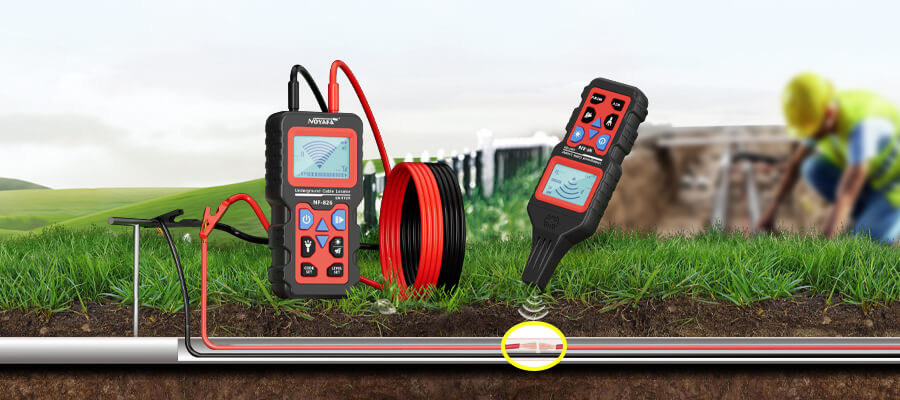How to Find and Repair A Broken Wire
A live circuit relies on electric wires.
When wires are mostly hidden in the walls, tubes, ceilings, and underground, they will remain functional for decades. However, there are always accidents damaging the copper wires. Bites of rats and other filthy little lives, moisture, heat, and metal fatigue will damage a wire and disconnect the circuit. As a result, no power is available to the lights, home appliances, and anything installed on the far end.
To make the circuit live again, we need to find the broken wire and possibly locate the break. If you’re confident, we can try to fix or replace the broken wire. All methods and skills will be available below. Read on.
- Part 1: What are the causes of broken wires
- Part 2: Signs of a broken electric wire
- Part 3: How to find a broken wire
- Part 4: How to repair a broken electric wire
⭐ Ready to Get a Tool to Repair Your Wire?
👉 Explore the full product page here: NF-826 Cable Tracer
Part 1: What Are the Causes of Broken Wires?
As time passes, wires can be subject to wear and tear - or other problems such as dry rot, rodent damage, and loose connection points - that can lead to wire breaks or shorts. Older homes are especially susceptible because of wear-and-tear from age and rodents; newer homes tend to fare much better in this regard because of advances in technology.
Sometimes when there are problems with wiring, there will also be smoke or sparks coming from it. The sparks may come about for several reasons; one being that the wires have been fried due to improper wire and cable selection.
Part 2: Signs of a Cable Break
In the event of a loss in power, it is possible to detect an electrical problem by looking for an outage. One way this may happen is when there's no voltage at outlets in one area but power in all other areas. Another sign would be lights not working in another room but lights elsewhere still functioning correctly.
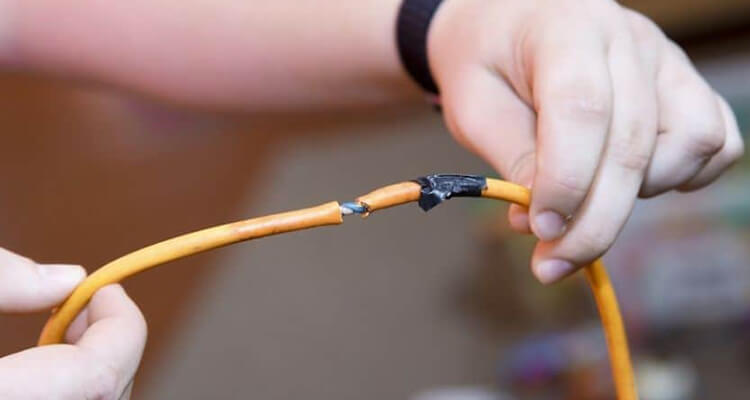
Sometimes, when there are issues with the wiring, there may also be smoke or sparks coming from the wires. The cause of this could either be because a cable has been cut open or due to incorrect wire and cable selections.
Damage can occur on various portions of the network: the power supply can be interrupted when it connects to the junction point of a cable with either an outlet or a switch. There are also instances when damage can happen in the area between these devices and the box or light device.
How to Find A Broken Wire
There are many cases of broken electric wires. They may be:
- dead wires left unused and disconnected on both ends;
- wires connected on both ends;
- wires buried underground or in the wall, ceiling, or tube;
- exposed copper wires;
For each, we have appropriate solutions to find the broken wire. By the way, some methods below will not only find the broken wire for you but also locate the breakpoint. So, if you’d like to, you can try to fix the broken wire at home.
Method 1: Find A Broken Wire with a Voltage Tester
A voltage tester is a very helpful electrician's tool. By tapping the probe into the wire, socket, outlet, or any metal part of electrical components, we can tell the existence of power.
There’s this type of non-contact voltage tester, AKA NCV. We don’t need to touch it to the live circuit, wire, or other electrical components. Just hover it over the object. And we can tell by the beeps or lights on it to see if the object is electrical.
How does a voltage tester help to find a broken wire?
Power runs through the normal wire. Once the wire breaks, the power will stop at the breakpoint. So, when we use the tester to check the other end of the wire, no beeps or lights. This wire is broken.
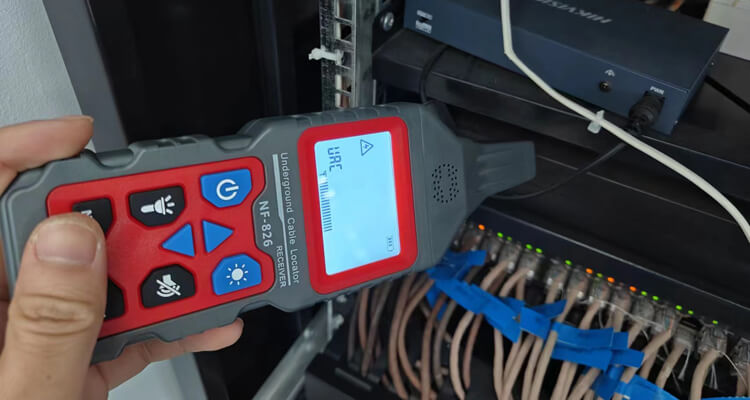
Caution:
You may know that this method works for connected wires. Still, if this is an unused wire, try to connect it to a circuit with a bulb and switch if you know how. When you have zero experience, try another method to find the broken wire.
Steps to find broken wires with non-voltage tester
Step 1: Buy a voltage tester pen
If you don’t have a tester tool like this, go and buy one.
You may take a look at the NOYAFA NF-826. This is an all-in-one electric wire tester. It’s a non-contact voltage pen, broken wire detector, and digital multimeter combo. It tests voltage, resistance, and currents with 100% safety. It can locate broken wires and breakpoints for you in seconds.
Add it to your toolbox with just a few bucks.
Step 2: Locate the wire
Now, identify the wire that you suspect it’s broken. Locate both ends.
When the wire is mounted to a switch or outlet, uncap the box. Don’t need to expose the wire. Just make sure it’s separated from other cables.
If there are many wires and you have no idea which to test, don’t worry. Cut the band or tie and make them separate. We can test these wires one by one.
Step 3: Test the wire
Turn on NF-826 and activate the NCV mode. Hover the probe over both ends of the wire.
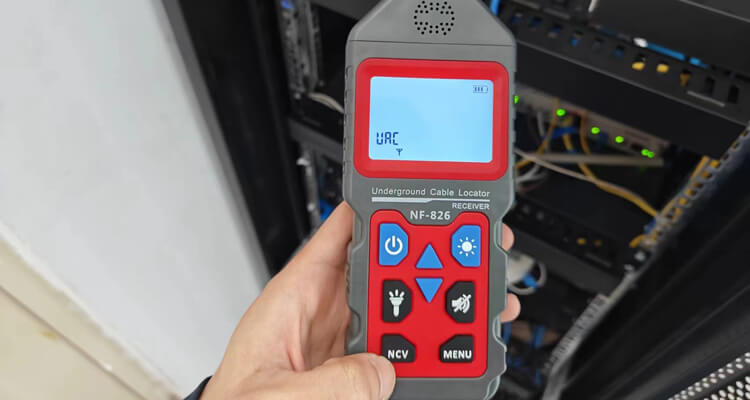
When it beeps, it means power running through this part. If the tester makes no sound when testing one end of the wire, the wire is broken somewhere and electricity cannot reach.
When there are multiple wires:
- Hover the tester to one wire at a time. Locate the broken wire when the tester is silent.
Keep on moving the tester along the wire. Where the beep stops is the breakpoint.
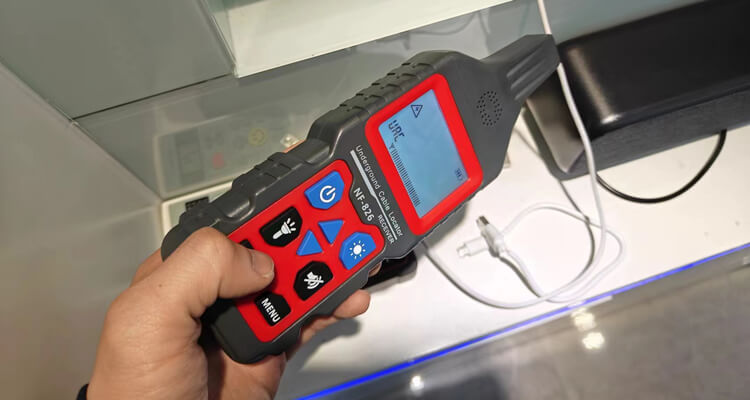
Method 2: How to Find A Broken Wire with A Multimeter
A multimeter is a very effective way to check a wire’s continuity. It’s a must-have tool for every electrician.
When locating a broken wire, a multimeter is 100% useful.
Tip:
There're multiple multimeters available online. For me, I'm using NOYAFA NF-8509 Multimeter & Tester. This is an all-in-one tool for both electric and networking diagnosis. It can be served as a digital multimeter to test the resistance, current, and voltage of objects. And can also be used to checkign continuity of network cables.
If you've interested, check on the universal NF-8509 Multimeter & Tester.
Let’s check the steps below.
Step 1: Test the probes
This step is for a disconnected wire! Don’t attach it any circuit!
Turn the multimeter to Ohms mode.
Test the probes by toouching them together. If the value on the multimeter changes from I, 0 I, or any original value to 0.02-0.05. The probes works fine.

We will move to test the wire.
Step 2: Test the ohms (resistance)
Disconnect the wire from both ends. Tap the one probe to one copper end and another probe to the other end.
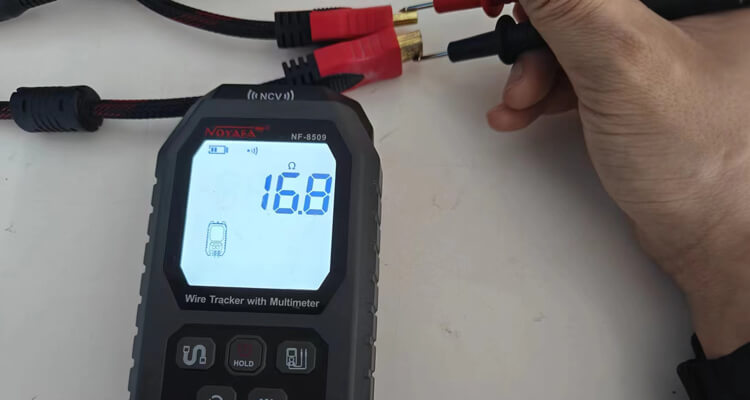
If the wire is fine, you will see the exact number. That’s the resistance of this wire.
When the wire is broken, the value will not change or change to 0.
Caution:
Never use this method to live wires. Even though multimeters have voltage protection, we don’t recommend doing so. It’s risky. If you want to test a connected wire, try Method 3 and 4.
Method 3: How to Find A Broken Wire Underground or in The Wall
When the wire is hidden underground or in the drywall, we can’t disconnect and pull it out easily. We need a broken wire detector tool. With it, we can find the broken wire and locate the break without destroying the yard or walls.
Here, we will use the NF-826 Underground Wire Tracker. This is another outstanding tool produced by NOYAFA Manufacture. They have put jam-proof scanning chips in the tool. This makes it a quick and accurate detector to find hidden wires and breaks.
Supporting detection up to underground or in-wall wires up to 2-meter-deep (80-inch), NF-826 saves your time of digging or drilling. With it, we can locate a broken wire with the least effort.
Now, get NF-826, and let’s start to find a broken wire in your garden, under the floor, over the ceiling, or inside the wall.
Step 1: Get the broken wire locator ready
Connect the clamps to the Emitter device with the adapter cables.
Step 2: Prepare the wire
Turn off the power for the wire you’re about to test. Go to the breaker box and switch off the related circuit breaker.
Expose one end of the wire. We can locate the switch that connects to the wire. Uncap it. Stop when we can see the copper wire.
Attach the red crocodile clamp to the copper wire. And leave the black one to the ground or wall.
Step 3: Detect the break of this wire
Turn on both the Emitter and Receiver devices. Press the Start button on the Emitter and it starts to send analog signals to the wire.
Hover the Receiver over the switch and start to move the device. Adjust the direction based on the volume of the beeping sound. Closer the louder. The sound gets quiet when moving to the wrong path.
If the Receiver beeps from the switch to the connected appliance (bulb, digital fence, sprinkler, and more), the wire works 100% fine.
When we reach a point where the beeping gets quiet in any direction except heading backward, the wire is broken. And this is where it breaks.
Method 4: How to Find A Broken Wire with a Clamp Meter
When the wire is working in a circuit, a clamp meter is there to help. Without touching a wire, the device can detect the currents and display the parameters on the screen. it’s safe and easy to use.
Get a clamp meter and turn it to Current or A mode. Some models may have DC (direct current) and AC (alternating current). Choose AC mode for home circuits.
Press the trigger or the open button to open the jaws of the meter. Put the clamp around the wire. Let the wire stay in the middle of the clamp. You’d better don’t touch the jaws to the wire.

If the wire is live, the clamp meter will detect the current and display the parameter.
Once it moves to the breakpoint, the current becomes 0 on the screen.
How to Repair A Broken Electric Wire
It’s not difficult to fix a broken wire. All we need are:
- Locate the break,
- Expose the copper wires,
- Attach the two ends
- Add protection to the connection point
Before we start, do one thing: YOU MUST DISCONNECT THE WIRE FROM POWER!
Also, to ensure safety, wear rubber gloves and wear glasses.
Step 1:
Use any method above to locate the break in the wire.
If the wire is in the wall or underground, break the wall or floor to expose the wire.
Cut off the broken copper wires, around half an (1 to 2 cm) inch at each end. Continue to remove the insulation part of the wires for around 1 inch (3 cm).
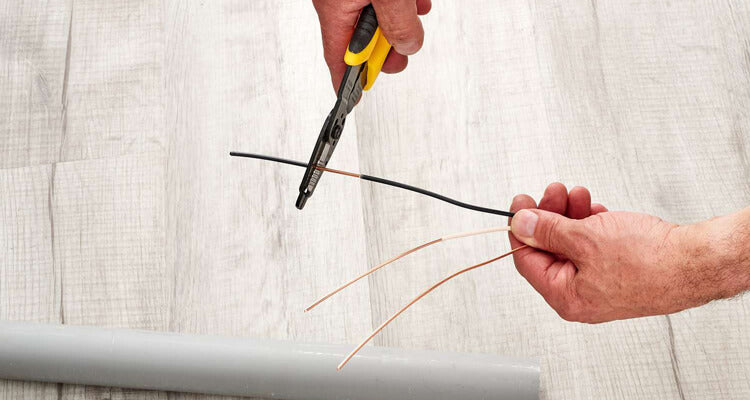
Step 2:
Twist the copper wires from the broken ends together. Make sure the attachment is firm and stable.
Step 3:
Wrap the connection with electrical tape. If possible, put the fixed wire in a wire protection tube or sleeving.
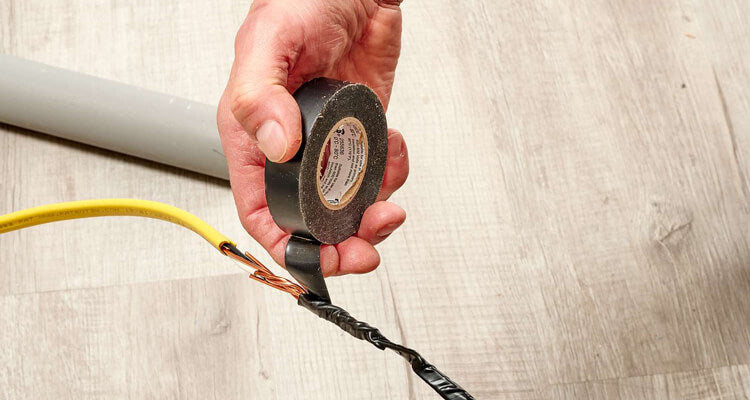
Conclusion
When we encounter a broken connection due to a broken wire, don't worry. The easiest solution is to call the electrican for help. Though it costs a lot, it's the most effective and safest method.
Still, if you're good at troubleshooing and DIYs, identifying a broken wire and locating the breakpoint are not difficult at all. With the right tool, we can easily find the breaks. Just wear protection and shut off the power of the target circuit before you touch anything to the wire.


